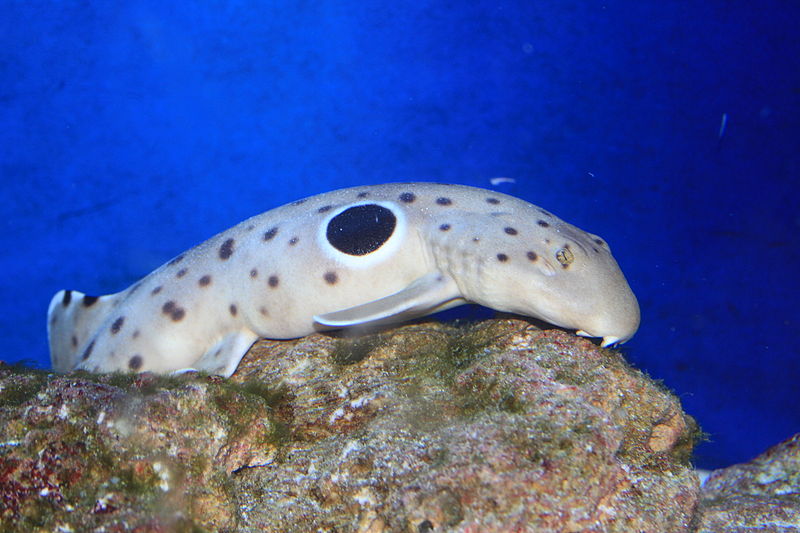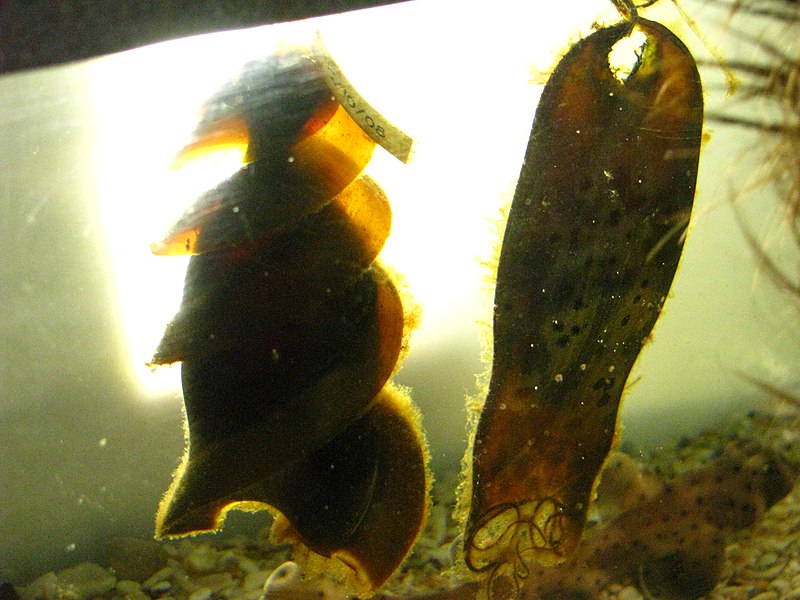Sharks hold a fascination for everyone, whether they inspire fear or admiration. They are iconic creatures many of us automatically associate with oceans, reefs, beaches and aquariums. Though I have to say I am not a supporter of most sharks being placed in home aquariums, the possibility and temptation presents itself too often to be ignored. Perhaps the best option is to present readers with enough information on some more appropriate species, and to encourage interested parties to research before purchase, so that these beautiful creatures will be kept in captivity more successfully.
In the vast majority of cases, captive sharks are best kept and observed in large, public aquariums, or better yet, left in their native waters to thrive. Most species are simply too large, too mobile, and too high maintenance for the home aquarist. If you have a VERY large aquarium, more than adequate filtration, and the financial means to acquire and support them, there are a couple of species that are less demanding that I’d like to introduce. These species are the most common in the trade, and may be kept successfully with the right care and housing.
Bamboo Sharks, Coral Catsharks, and Epaulettes
Bamboo Sharks (i.e. Banded Catsharks) are probably the most frequently offered type of shark in the aquarium trade. Several species are seen, they are banded brown and tan, and may have spots when they mature. Those in stores are reasonably priced and are typically sold as young pups. Egg cases are also available, allowing you to observe the embryonic shark as it develops and hatches in captivity (usually in 3-6 months). Pups are about 6 inches long when they emerge. These sharks are native to the Indo Pacific and have the potential to grow to about 3.5 feet in length.
Coral Catsharks are a little less frequent, but they have very attractive black, tan and white patterns. They are true tropical reef sharks, and grow to just under 30 inches in length. They are quite docile, but should not be underestimated.
 Epaulettes are very attractive, too, but they are not seen often in the trade. These sharks are also tropical, collected from Australia and the surrounding region. They are usually pale brown in color with dark spots all over and an ocellated black spot just behind the gills. They reach a size of a little over 3 feet and are usually more expensive that cat or bamboo sharks.
Epaulettes are very attractive, too, but they are not seen often in the trade. These sharks are also tropical, collected from Australia and the surrounding region. They are usually pale brown in color with dark spots all over and an ocellated black spot just behind the gills. They reach a size of a little over 3 feet and are usually more expensive that cat or bamboo sharks.
Horn Sharks
Horn Sharks are another common type imported for sale. Also known as bullhead or pig head sharks, these have stout bodies, a short, blunt head, with ridges over the eyes, and a prominent spine on the front of each dorsal fin. Most often California or Mexican Horn sharks (and once in a while Port Jackson Horn Sharks from Australia) are found in pet stores. These sharks grow to about 3.5 feet at maturity. They are found along sandy bottoms and in kelp beds along the western coast of California and Mexico to Central America. These sharks prefer cooler water than those above (a chiller may be required), and they tend to excavate rock and substrate.
We have 2 resident Horn Sharks here in our Touch Tank. They spend most of their time under the rock formations in the center of the tank, but become quick and active when they smell food. With the cooler temps, large volume and heavy filtration in the display they have grown quite fat and happy. We’ve even found several spiral-shaped egg cases in the past couple of years! These sharks are quite docile, with a mouth full of teeth designed to crush more than to tear.
To Be Avoided
Several other species are seen from time to time including Wobbegongs, Dogfish, Nurse Sharks, and other even less appropriate species. These should not, in my opinion, be offered or purchased for home aquariums due to their large potential size, and/or special requirements.
Keeping Sharks
 Sharks and egg cases should NOT be placed in tanks of less than 180 gallons (preferably larger), and the tank should be well-established. Despite their small purchase size and relatively sedentary behavior, they grow quickly and need space to move freely and turn. The larger the tank the better (think about 3 times or more the length of the sharks adult size), furnished with some minimal rock piles and a cave where the fish can retreat and rest. You’ll also want to supply ample flow and filtration as well as a good protein skimmer. Even if you feel that the tank you already have may be large enough for the baby shark, or that you’ll have time to upgrade to a larger tank when necessary, it would be best to have an established tank of adequate size and function before considering a shark.
Sharks and egg cases should NOT be placed in tanks of less than 180 gallons (preferably larger), and the tank should be well-established. Despite their small purchase size and relatively sedentary behavior, they grow quickly and need space to move freely and turn. The larger the tank the better (think about 3 times or more the length of the sharks adult size), furnished with some minimal rock piles and a cave where the fish can retreat and rest. You’ll also want to supply ample flow and filtration as well as a good protein skimmer. Even if you feel that the tank you already have may be large enough for the baby shark, or that you’ll have time to upgrade to a larger tank when necessary, it would be best to have an established tank of adequate size and function before considering a shark.
These fish will prefer their salinity on the higher side to mimic sea water, and keep it constant. They will require regular water changes to keep their conditions pristine. A varied diet of meaty foods should be supplied, including but not limited to shrimp, clam, krill, squid, silversides, and others (fresh or frozen, not live). These fish can be fed 2-3 times each week, but be careful not to over feed for the sake of the shark and the water quality. Hand feeding should be avoided to prevent accidental bites (don’t underestimate their speed or agility!). Other fish may be housed with these sharks, as long as they are of adequate size, but be observant as some fish tend to be notorious harassers of sharks. Bottom dwellers and invertebrates like crabs, shrimp, and urchins should be avoided as they may become casual meals. Also be aware that sharks have acute sensitivity to metals and chemicals in medications, so if a problem arises, thorough research should be performed before adding any treatment to the tank.
When you’re ready and you have carefully considered purchasing a shark, look for healthy, well-adjusted specimens that are feeding well and are not emaciated. Avoid sharks with visible parasites or that look sunken (though newly hatched pups take a little while to fatten up). With the right care and set-up they can be interesting and long-lived pets.
Thanks for reading, and please let us know if you have any comments or questions about sharks for a home aquarium.
Until next time,
Patty
Shark egg cases image referenced from wikipedia and originally posted by Jean from flickr by falashad
Epaulette Shark image referenced from wikipedia and originally posted from flickr by Jim Capaldi
 That Fish Blog – Aquarium Advice and Information
That Fish Blog – Aquarium Advice and Information
